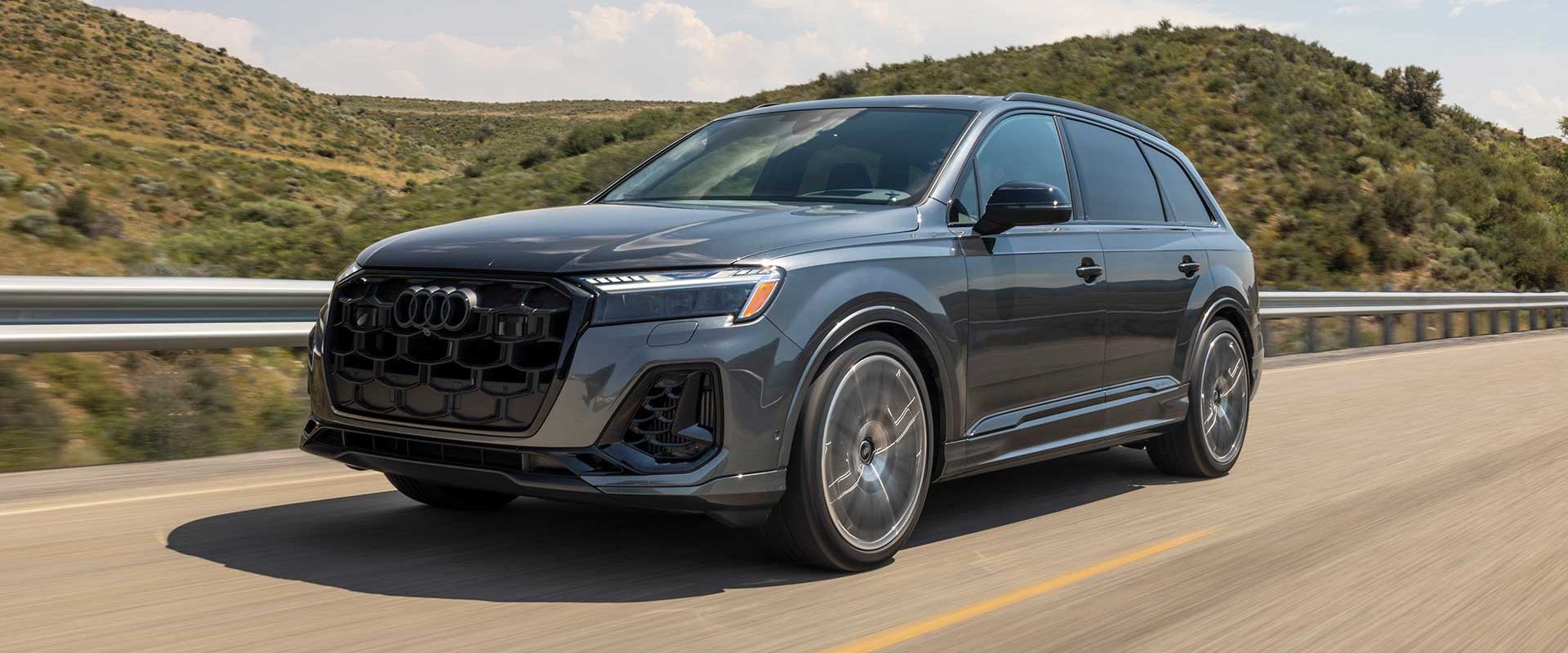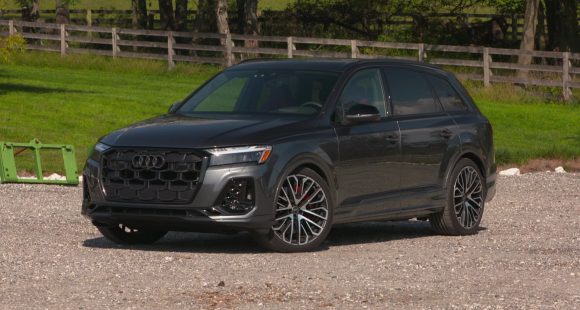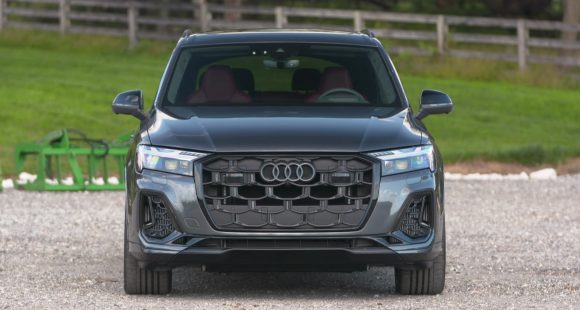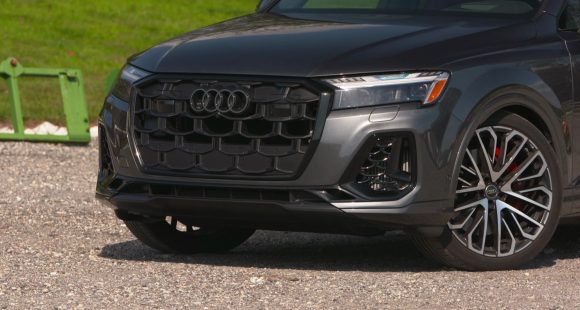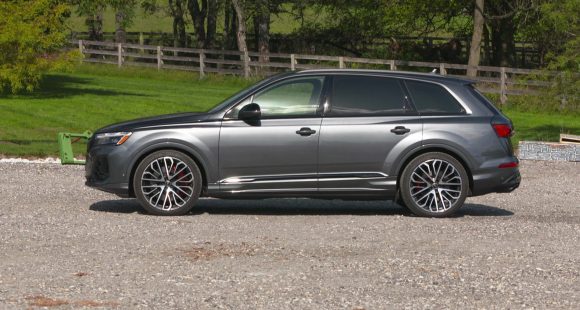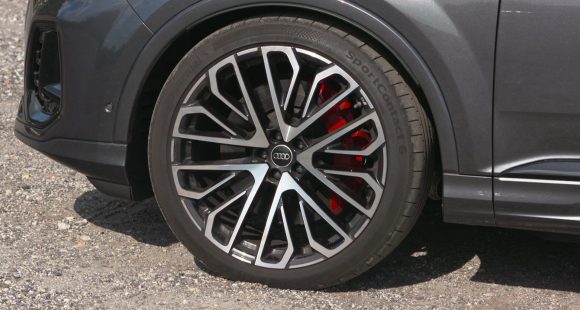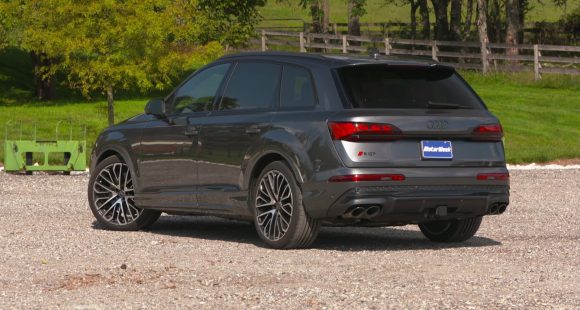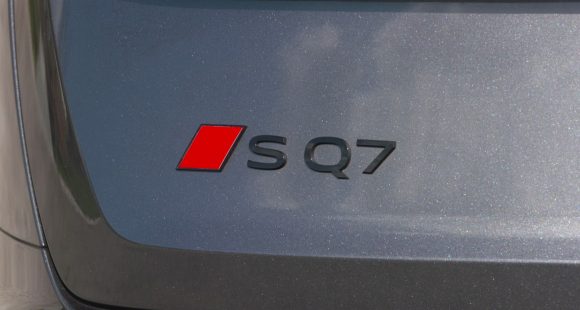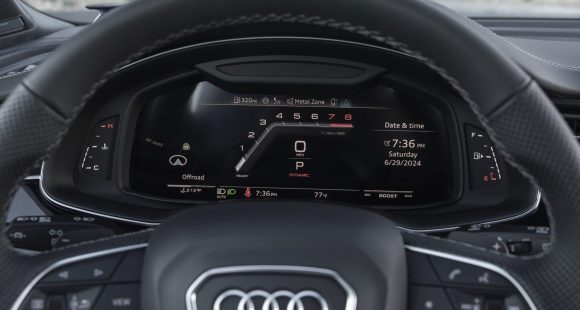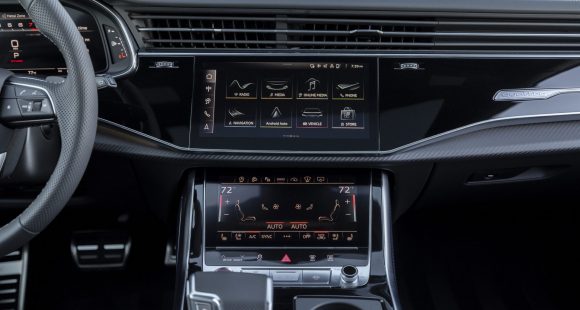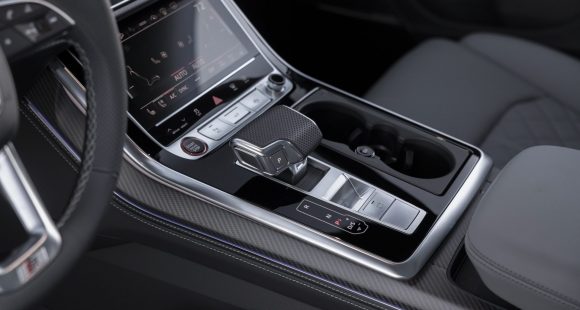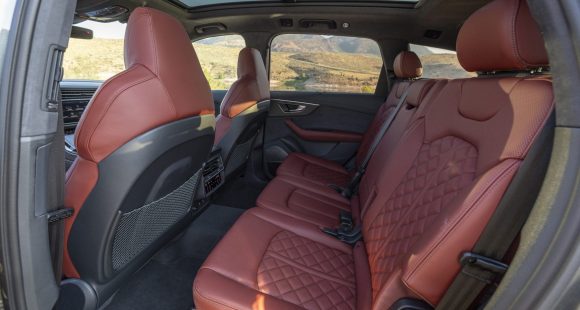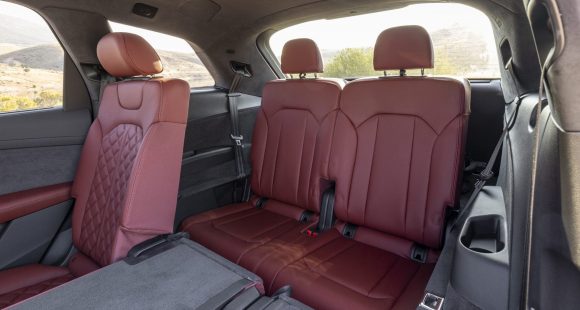2010 Buick LaCrosse
After decades of being too closely associated with older, more conservative buyers, Buick made a breakout in appealing to a younger, more affluent set with the 2008 Enclave crossover utility. The Enclave has been an unqualified success. A second effort is ready with the all-new Lacrosse sedan. While the name is familiar, the car is anything but. It’s a fresh approach with stunning good looks inside and out. Now we’ll see if the Lacrosse can deliver.
Except for the name, the 2010 Buick LaCrosse is all-new. And even that was a point of discussion, since it was first revealed as the Invicta concept at last year’s Beijing Auto Show, and is sold in Canada as the Allure. Its sexy, Asian-penned styling could be mistaken for anything from a Lexus to a Mercedes. Scimitar blade-shaped headlamps flank an Enclave-like waterfall grille. Stylized Buick portholes have migrated from the fenders to the hood.
A high beltline makes room for a deeply sculpted “sweepspear” body line, and provides the greenhouse a low-slung look, even though this LaCrosse is two inches taller.
The less-original rear has lots of chrome- on the license plate header, edging the taillights, and plating the dual exhaust. Wheels come in 17’s, 18’s, or our top-of-the-line CXS Touring’s 19-inch chrome-painted alloys wearing low-profile Eagle RS-A rubber. As part of the ground-up redesign, the outgoing LaCrosse’s pushrod engines are gone, replaced by a trio of twin-cam motors, all with fuel saving direct fuel injection, and a six-speed automatic transmission. Base CX and mid-level CXL share a 3.0-liter V6 with the new Cadillac SRX, churning out 255 horsepower and 217 pound-feet of torque.
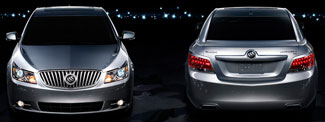 Our LaCrosse CXS sports the same award-winning 3.6-liter V6 that powers the Enclave, rated at 280 horsepower and 259 pound-feet of torque. It will be available in front or all-wheel-drive, a first for a Buick car. Due soon is the Malibu’s frugal Ecotec 2.4-liter four cylinder. This new base is rated at 182 horsepower and 172 pound-feet of torque, with highway fuel economy well into the 30’s.
Our LaCrosse CXS sports the same award-winning 3.6-liter V6 that powers the Enclave, rated at 280 horsepower and 259 pound-feet of torque. It will be available in front or all-wheel-drive, a first for a Buick car. Due soon is the Malibu’s frugal Ecotec 2.4-liter four cylinder. This new base is rated at 182 horsepower and 172 pound-feet of torque, with highway fuel economy well into the 30’s.
But even our CXS 3.6 did pretty good in that area. Government fuel economy ratings are 17 city, 27 highway. We achieved a fine 24.5 mpg in real-world driving with regular gas. With an Energy Impact Score of 16.3 barrels of oil consumed annually, and a carbon footprint of 8.7 tons of CO2 per year, the LaCrosse CXS is on par with its premium rivals. Ditto acceleration: zero to 60 in a respectable 7.5 seconds, with a quarter mile of 15.9 at 90 mph. The big six delivers fine low-end power off the line. Shifts, however, were soft and delayed.
Handling from its new-generation Epsilon platform was actually better than expected. Despite some tendency to understeer, the LaCrosse shifted its weight well along a taut suspension equipped with optional real-time damping. Steering had reassuring heft and a strong self-centering feel. With standard stability and traction control, LaCrosse is much nimbler than its 4065-pound curb weight suggested. Grippy anti-lock disc brakes and a nicely-modulated pedal made for stops averaging a short 125 feet from sixty. Stability was excellent.
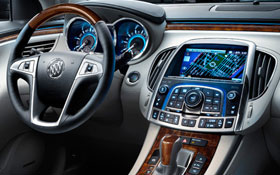 Now for the best part; Invicta’s gorgeous and emotional interior theme was delivered intact for LaCrosse, including elegant door treatments, twin-pod instrument cluster, cool blue lighting, and graceful center console. Beefy seats are wrapped in finely-stitched soft leather with available heat and ventilation. Eight-way power is standard for the driver as is excellent lateral support.
Now for the best part; Invicta’s gorgeous and emotional interior theme was delivered intact for LaCrosse, including elegant door treatments, twin-pod instrument cluster, cool blue lighting, and graceful center console. Beefy seats are wrapped in finely-stitched soft leather with available heat and ventilation. Eight-way power is standard for the driver as is excellent lateral support.
All trims are equipped with satellite radio, automatic climate, and OnStar. Our CXS was loaded up with navigation and rear view camera, oversized sunroof, and head-up display. The split rear seat cushions are a little low, but there is generous legroom, besting the Lexus ES 350 by 4 1/2 inches. There’s an armrest with pass through, an available power rear sunshade, and dual screen DVD. The trunk, however, at 12.8 cubic feet, is smaller and less useable than the ES’.
Base pricing for the LaCrosse is $27,835 for the CX; the CXL starts at $30,395, $32,570 with all-wheel-drive, and the CXS starts at $33,765. In China, where Buick is number one in sales, the venerable brand is revered as a style-setter. With the Enclave, and now the 2010 LaCrosse, that image is starting to take hold in America as well. The “new” General Motors has a lot riding on the success of the LaCrosse, and from where we sit, this ride looks fantastic.
Specifications
- Engine: Cxs 3.6-Liter V6
- Horsepower: 280
- Torque: 259 Lb Feet
- 0-60 MPH: 7.5 Seconds
- 1/4 Mile: 15.9 Seconds @ 90 MPH
- 60-0 MPH: 125 Feet
- EPA: 17 MPG City/ 27 MPG Highway
- Mixed Loop: 24.5 MPG
- Energy Impact: 16.3 Barrels Oil/Yr
- CO2 Emissions: 8.7 Tons/Yr
2025 Audi SQ7
Audi…Still Bringing The V8 Power
Like every other luxury-minded European carmaker, Audi has a full portfolio of utility vehicles to choose from, including big ones like the Q7 and big fast ones like this SQ7. 2025 brings a host of updates for this still V8-powered prestige performer, and we can’t wait to check it all out.
Audi’s largest SUV, the seven-passenger Q7, launched way back in 2007; but it wasn’t until 2020, well into its second generation, that it got the proper high-performance treatment with an SQ7 version. Well, it’s time for the 2025 model year, and while the SQ7 is still rockin’ through its second gen, Audi is cranking it up when it comes to style and tech.
All Q7s get revised styling for 2025 with modernized front and rear fascias, along with updated and now customizable LED lighting. Up front, lower aero treatments are slightly reshaped, and Audi’s Singleframe grille gets new patterns that are unique for Q7 and SQ7. In back, there’s a more aggressive looking rear diffuser that better integrates some new exhaust tips. And rounding it out are some fresh color choices and five new wheel designs. In addition to the unique grille, SQ7s feature additional aero treatments throughout, quad exhaust tips, and larger brakes behind 21-inch wheels, which can be optioned up to these 22s.
Tech updates come by way of better smartphone integration into the MultiMedia Interface, with the ability to not only use more third-party apps but download them directly to the vehicle. It’s all done through Audi’s latest MMI setup which features an in-dash infotainment touchscreen, a smaller touch panel just below for climate controls and additional functions such as handwriting recognition, and, of course, a 12.3-inch virtual cockpit for the driver.
There are some minor material upgrades throughout, and more uniqueness to coincide with trim levels; plus, some new available packages to further customize the space. All Q7s are outfitted for seven passengers with plenty of adult-size room in the second-row bench; the third row, it’s best left to the kids.
This thing is quick, like EV quick, taking off much faster than you’re expecting.
All of that is indeed great, but the star of this show remains what’s under the SQ7’s hood. Oh yeah, Audi still believes in V8s, and this is a great one, the same 4.0-liter twin-turbo engine used by Porsche and even Lamborghini in their SUVs. Here in Audi tune, it delivers 500 horsepower along with 568 lb-ft of torque. And wow this thing is quick, like EV quick, taking off much faster than you’re expecting. At Mason Dixon Dragway it hooked up easily, pounced off the line, and pulled hard the whole way down the strip. We hit 60 in a mere 3.8 seconds.
Audi keeps the Tiptronic name alive for their eight-speed automatic transmission and it slams through the first few gears quite aggressively, easing off a little in higher ones. That V8 made all the right noises throughout the quarter-mile but without being too loud. 12.4 at 111 mph was our best time.
SQ7s get a unique sport-tuned adaptive air suspension, and it almost eliminated all body roll through our handling course, helping this big utility feel more like a small sports car. Quattro all-wheel drive is standard on all Q7s but there is unique tuning here in the S, and we really had to push it hard to initiate any understeer. The brakes came on strong as soon as we started to press the pedal in our panic braking runs, stopping us from 60 in an impressive 94 feet. There was some nosedive, but absolutely no discernable fade.
For all its performance, the ride quality is sublime, never harsh, making for a very enjoyable drive home from the track. It also feels built like a tank, weighing more than 5,000 lbs., though that substantial structure allows for towing up to 7,700-lbs.
Government Fuel Economy Ratings are 15 City, 21 Highway, and 17 Combined. We averaged a good 20.1 mpg of Premium in our driving loop. As far as high-performance SUVs go, the SQ7’s starting price of $92,095 for Premium Plus trim is not unreasonable. You can upgrade to Prestige trim for $98,195.
While not exactly commonplace, high-performance SUVs have seemingly been coming at us from all sorts of brands lately, from luxury to mainstream– which is the direction of choice for Audi, bringing the premium driving experience closer to attainable levels. So, if you’re looking for high levels of luxury, combined with raucous V8 performance, in a vehicle that can still comfortably haul the family, the 2025 Audi SQ7 is eagerly waiting to deliver.
Specifications
As Tested
- Engine: 4.0-liter twin-turbo V8
- Transmission: 8-speed automatic
- Horsepower: 500
- Torque: 568 lb-ft.
- EPA: 15 City | 21 Highway | 17 Combined
- 0-60 mph: 3.8 seconds
- 1/4 Mile: 12.4 seconds at 111 mph
- Braking, 60-0 (avg.): 94 feet
- MW Fuel Economy: 20.1 MPG (Premium)







